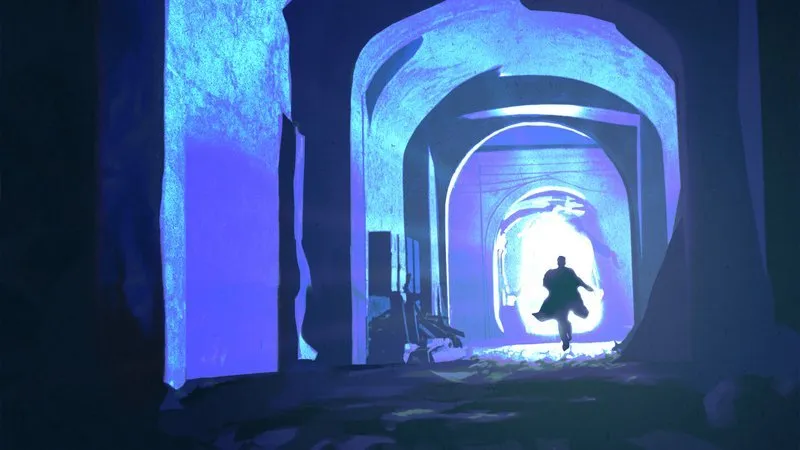
Designing Characters from a Storytelling Approach 
Leo Matsuda, a Disney Story Artist and Director, shares his approach to designing characters from a storytelling perspective. Through this 10 part class series, viewers will gain insight into how to create unique and memorable characters that stand out. Leo's techniques will help bring stories to life. ▼
ADVERTISEMENT
Course Feature
![]() Cost:
Cost:
Free Trial
![]() Provider:
Provider:
Skillshare
![]() Certificate:
Certificate:
No Information
![]() Language:
Language:
English
![]() Start Date:
Start Date:
On-Demand
Course Overview
❗The content presented here is sourced directly from Skillshare platform. For comprehensive course details, including enrollment information, simply click on the 'Go to class' link on our website.
Updated in [March 06th, 2023]
Designing Characters from a Storytelling Approach is a 10-part course series led by Disney Story Artist and Director Leo Matsuda. Through this course, students will learn Leo's approach to designing interesting, unique, and memorable characters that stand out. The course will focus on research and exploration, and how the thought process can result in more appealing and complex characters. Students will gain an understanding of how to create characters that are both visually appealing and emotionally engaging. By the end of the course, students will have the skills to create characters that are both visually and emotionally engaging.
[Applications]
After taking this course, students can apply the concepts they have learned to create their own characters. They can use the research and exploration techniques to create characters that are interesting, unique, and memorable. Additionally, students can use the storytelling approach to create characters that stand out and have more depth. Finally, students can use the techniques they have learned to create characters that are appealing and complex.
[Career Paths]
1. Character Designer: Character Designers are responsible for creating the visual look of characters in films, television shows, video games, and other media. They work closely with directors and producers to create characters that are visually appealing and that fit the story. Character Designers must have a strong understanding of anatomy, color theory, and design principles. As technology advances, the demand for Character Designers is increasing, and the job is becoming more specialized.
2. Storyboard Artist: Storyboard Artists create visual representations of stories and scenes for films, television shows, and video games. They work closely with directors and producers to create storyboards that accurately depict the story and the characters. Storyboard Artists must have a strong understanding of composition, perspective, and storytelling. As technology advances, the demand for Storyboard Artists is increasing, and the job is becoming more specialized.
3. Animation Director: Animation Directors are responsible for overseeing the production of animated films, television shows, and video games. They work closely with directors and producers to ensure that the animation is of the highest quality and that it meets the story's needs. Animation Directors must have a strong understanding of animation principles, storytelling, and visual design. As technology advances, the demand for Animation Directors is increasing, and the job is becoming more specialized.
4. Visual Development Artist: Visual Development Artists are responsible for creating the visual look of films, television shows, and video games. They work closely with directors and producers to create visuals that are visually appealing and that fit the story. Visual Development Artists must have a strong understanding of color theory, composition, and design principles. As technology advances, the demand for Visual Development Artists is increasing, and the job is becoming more specialized.
[Education Paths]
1. Animation Degree: An animation degree is a great way to learn the fundamentals of character design and storytelling. Animation degrees typically cover topics such as character design, storyboarding, animation principles, and 3D modeling. With the rise of digital animation, there is an increasing demand for animators with a strong understanding of the latest technologies and techniques.
2. Graphic Design Degree: Graphic design degrees focus on the visual aspects of character design, such as color theory, typography, and composition. With a graphic design degree, you'll learn how to create visually appealing characters that stand out and capture the audience's attention. Additionally, you'll gain an understanding of how to use digital tools to create and manipulate characters.
3. Illustration Degree: An illustration degree focuses on the artistic aspects of character design, such as drawing, painting, and sculpting. With an illustration degree, you'll learn how to create characters that are visually appealing and convey emotion. Additionally, you'll gain an understanding of how to use traditional and digital tools to create and manipulate characters.
4. Game Design Degree: A game design degree focuses on the interactive aspects of character design, such as game mechanics, level design, and user experience. With a game design degree, you'll learn how to create characters that are engaging and interactive. Additionally, you'll gain an understanding of how to use digital tools to create and manipulate characters for video games.
Pros & Cons

Learned a lot

Short bites of information

Amazing classes

Wish there was more content
Course Provider

Provider Skillshare's Stats at AZClass
Discussion and Reviews
0.0 (Based on 0 reviews)
Explore Similar Online Courses

Canva for Beginners

Storying the Self: Telling our Stories

Python for Informatics: Exploring Information

Social Network Analysis

Introduction to Systematic Review and Meta-Analysis

The Analytics Edge

DCO042 - Python For Informatics

Causal Diagrams: Draw Your Assumptions Before Your Conclusions

Whole genome sequencing of bacterial genomes - tools and applications

Visual Storytelling for Film and Video Games

Cinematic Storytelling


Start your review of Designing Characters from a Storytelling Approach